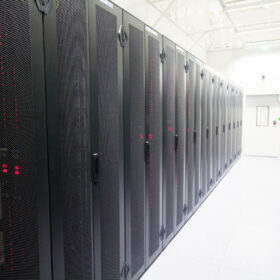Scientists from Arizona State University published a paper about solving mechanical-based failure mechanisms to make metal halide perovskite (MHP) modules and cells more stable and reliable.
The team asserted that the future of stable and efficient perovskite solar modules lies in understanding the interconnection between various degradation modes, mechanical, thermal, and chemical, under light, heat, and humidity stressors.
“We noticed that there is a significant acceleration in failure rates and reduction in lifetimes of perovskite solar modules in the field when compared to those tested in the lab,” the lead author of the paper, Marco Casareto, told pv magazine. “Specifically, there is little work on testing modules under multiple environmental stressors, such as both light and thermal fluctuations. We wanted to draw attention to this crucial area of research in the hopes of accelerating the progress and commercial viability of MHPs.”
“Yes, and we believe that these factors are connected, based on a shared underlying mechanism related to the mechanical properties of an MHP module,” research co-author, Nick Rolston, told pv magazine.
Their paper highlights issues related to the low fracture energy (Gc) of material layers and interlayer adhesion. “Gc is a material’s resistance to the propagation of a crack, dependent upon both material/interface bonding energy and the ability of a material to deform,” the research group explained.
In addition, it discusses the negative impact of film stresses within the perovskite absorber, how scribing removes material introducing even more interfaces for stress, and the importance of realistic accelerated degradation testing in the lab.
Realistic testing of devices with multiple simultaneous stressors is “crucial” to simulate operation in the field and achieve commercial maturity, emphasized the team. It proposed setting a minimum Gc of 1 J/m2 for devices in the lab to ensure that modules can withstand processing and packaging steps without mechanical failure, as well as reduce the potential for delamination and accelerated degradation.
The researchers propose that “engineering compressive stress” and “tuning layer properties” could improve thermomechanical reliability. They also describe encapsulant and perovskite solar module (PSM) materials strategies to increase toughness.
Their findings appear in “Designing metal halide perovskite solar modules for thermomechanical reliability,” published in communications materials.
When asked about reactions to the publication, Rolston said, “We haven’t had much feedback yet since the paper was just released; however, we have been discussing these results with several of the MHP startups that are working toward commercializing the technology, as well as the Perovskite PV Accelerator for Commercializing Technologies (PACT),” referring to the multi-year US Department of Energy’s PACT accelerator, led by Sandia National Laboratories.
There is still a long way to go, as Rolston sees it, but there is optimism about the development of MHP PV panels with operational lifetimes comparable to incumbent silicon or cadmium telluride (CdTe), if there is more of an effort in designing for thermomechanical reliability, rather than just for performance.
Looking ahead, Casareto said, “We’re currently working on validating our hypothesis of a mechanical-based failure mechanism. This involved fabricating MHP individual cells without scribing or encapsulation to establish a baseline of how they degrade under thermal cycling once encapsulated. We are now doing the same with modules soon to elucidate any differences in degradation mechanisms/severity of modules under thermal cycling. We aim to examine the effect of encapsulation, particularly at the scribe lines, as a module is thermally cycled to evaluate what properties are most important/beneficial for a PSM encapsulant.”
This content is protected by copyright and may not be reused. If you want to cooperate with us and would like to reuse some of our content, please contact: editors@pv-magazine.com.








By submitting this form you agree to pv magazine using your data for the purposes of publishing your comment.
Your personal data will only be disclosed or otherwise transmitted to third parties for the purposes of spam filtering or if this is necessary for technical maintenance of the website. Any other transfer to third parties will not take place unless this is justified on the basis of applicable data protection regulations or if pv magazine is legally obliged to do so.
You may revoke this consent at any time with effect for the future, in which case your personal data will be deleted immediately. Otherwise, your data will be deleted if pv magazine has processed your request or the purpose of data storage is fulfilled.
Further information on data privacy can be found in our Data Protection Policy.